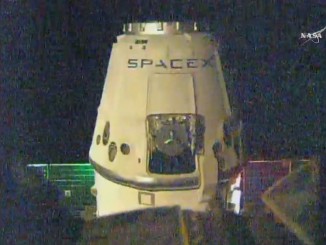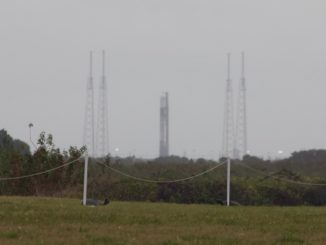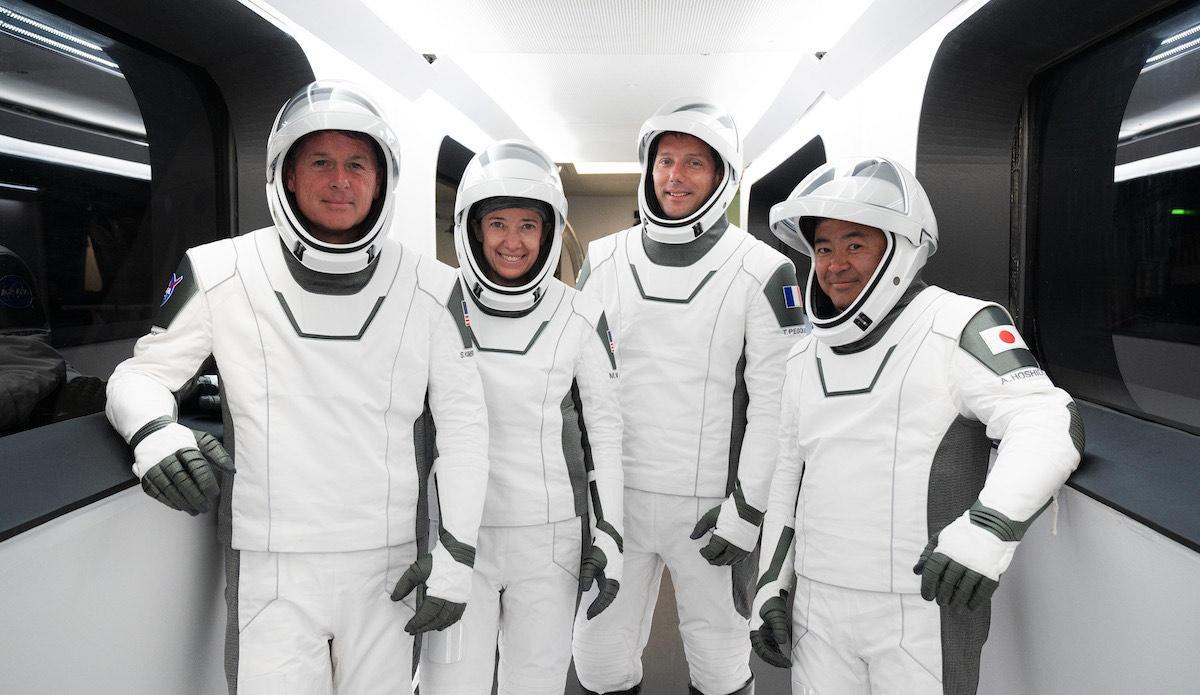
After completing a dress rehearsal for launch day over the weekend, the four astronauts gearing up for liftoff Thursday on a SpaceX Falcon 9 rocket are in good spirits and spending time with their families in Florida before leaving the planet for six months.
Forecasters with the U.S. Space Force’s 45th Weather Squadron predict an 80% chance of acceptable weather for launch at 6:11 a.m. EDT (1011 GMT) Thursday from pad 39A at NASA’s Kennedy Space Center. The four astronauts, led by veteran NASA commander Shane Kimbrough, will fly with a Crew Dragon capsule to the International Space Station.
Kimbrough and NASA crewmate Megan McArthur, Akihiko Hoshide of Japan, and Thomas Pesquet of France — all with spaceflight experience — suited up in their SpaceX pressure garments early Sunday and rode in Tesla Model X SUVs from crew quarters at Kennedy to pad 39A. The astronauts used the same timeline they will follow on launch day, and departed their suit-up room at the Neil Armstrong Operations and Checkout Building shortly before 3 a.m. EDT (0700 GMT).
They arrived at the launch pad less than a half-hour later to board the Crew Dragon Endeavour spacecraft on top of the 215-foot-tall (65-meter) Falcon 9 rocket. They then disembarked after simulating a scrubbed launch attempt, and returned to crew quarters for a debriefing before sunrise Sunday.
The “dry dress rehearsal” was a practice run for the astronauts and SpaceX support teams who will help the crew members suit up and strap in to the Dragon capsule.
Pesquet, a French-born European Space Agency astronaut, said Monday everything was on track for liftoff Thursday. The mission will be the second regular space station crew rotation flight by SpaceX under a multibillion-dollar contract with NASA, which also arranges rides to the complex for European, Japanese, and Canadian astronauts.
“We are putting the finishing touches on the training,” Pesquet said Monday morning. “There are only … three days exactly, a little bit less now, to go before the launch. Everything is going well. The rocket is ready. The spacecraft is ready.”
“We actually had a couple of days of margin that we didn’t need in the end, so now the rocket is just going to sit on the launch pad today and tomorrow, pretty much, before the final prep on Wednesday, and then on Thursday we’ll be ready to launch,” said Pesquet, who spent 196 days in orbit on a previous trip to the space station. “The crew is happy. The crew is in great shape, in high spirits. The families are here at the Cape, and everything is fine. We’re trying to enjoy our last few days on Earth before leaving the planet for six months.”
The Dragon astronauts are scheduled to return to Earth for a splashdown off the coast of Florida in late October.
Hoshide will take over as commander of the space station’s Expedition 65 crew next week, assuming the helm from NASA astronaut Shannon Walker. Walker and her crewmates — Mike Hopkins, Victor Glover, and Japanese astronaut Soichi Noguchi — are scheduled to come back to Earth on April 28 on their Crew Dragon Resilience spacecraft, wrapping up a mission that launched in November.
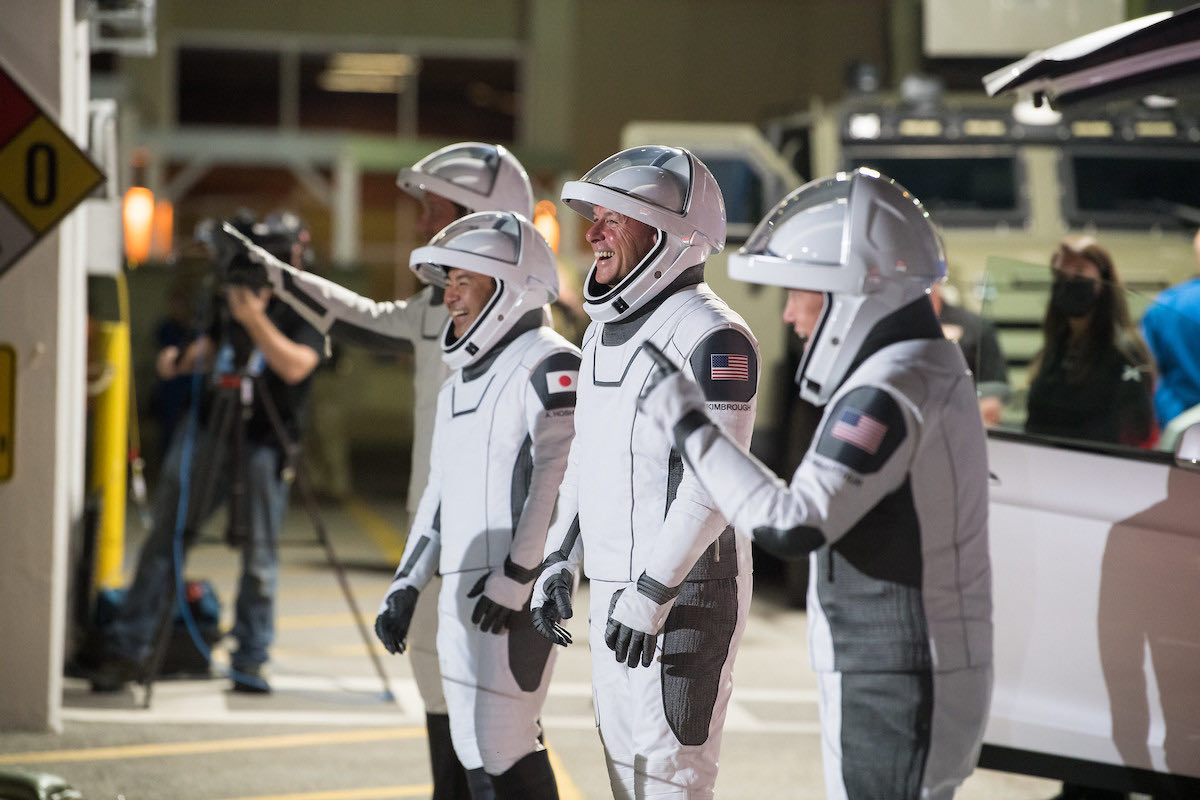
Later this year, Pesquet will get a turn at space station commander. Pesquet worked as a spacecraft engineer in European industry and for the French space agency, then became an airline pilot for Air France before his selection as an ESA astronaut in 2009. He first launched into space in 2016.
On his first spaceflight, Pesquet launched and landed on a Russian Soyuz capsule, which has a design rooted in the 1960s. He told reporters Monday that he expects a similar ride during launch on the Falcon 9 rocket, which burns the same kerosene and liquid oxygen propellants as Russia’s venerable Soyuz launcher.
The Crew-2 mission is the first time SpaceX has used a reused booster and Crew Dragon spacecraft for an astronaut mission.
“I don’t expect it to be bad at all,” Pesquet said. “Everybody who flew on the Dragon and Falcon 9 loved it so far. The return to Earth is always a bit rough, but that’s the same in every single space vehicle.”
He said the automation of SpaceX’s Crew Dragon spacecraft makes the vehicle safer. Under normal conditions, the capsule flies to and from the space station on autopilot.
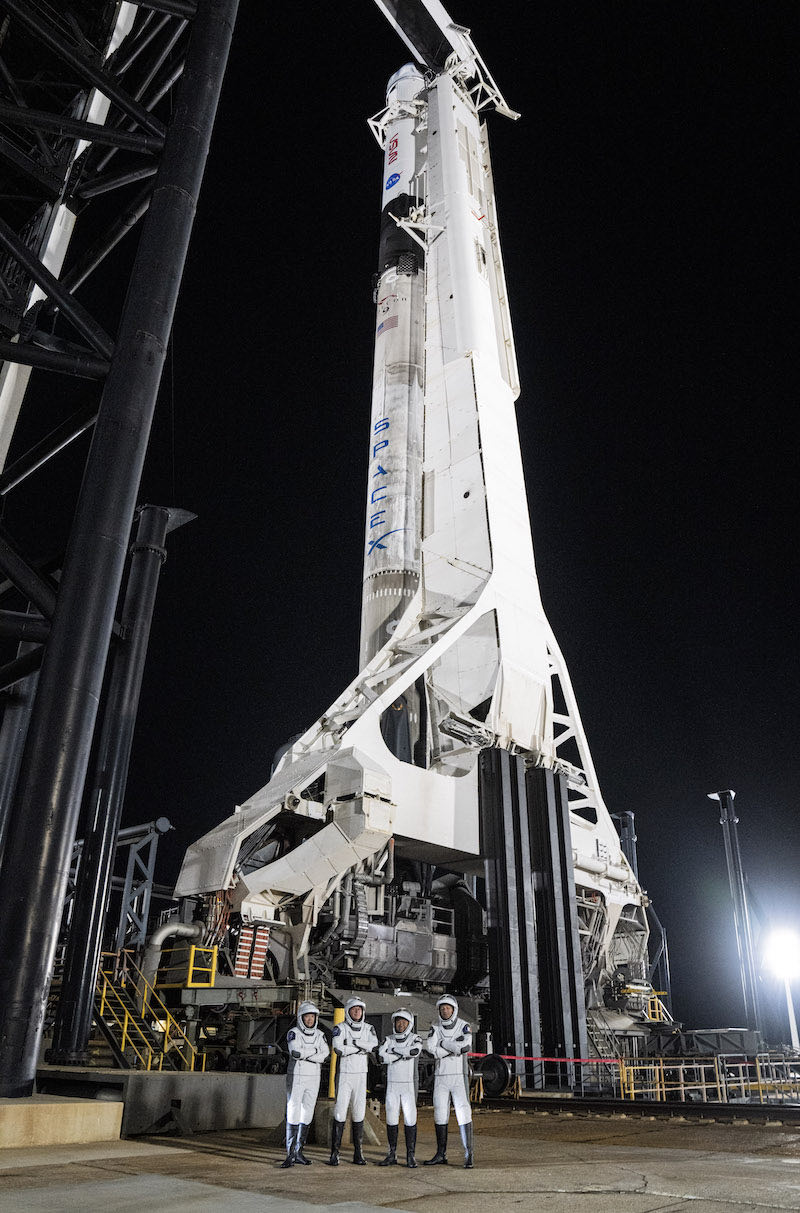
“For us, what it means is we don’t have that many actions to take in a nominal situation,” said Pesquet, who was an instructor in cockpit protocols for Air France. “Of course, in an off-nominal situation, we have to take action. But what it means is you’re available to manage the situation. Your situational awareness is just unbelievable.
“You have these huge big screens that are showing you, in every possible way, what’s happening,” Pesquet said. “The priority of the information is already pre-analyzed by the system. The color coding is great. The way the information is laid out is just fantastic. You know all the time what’s going on.
“Soyuz is unbelievably reliable, but you had to make sense of all that information that was sparse and disseminated at every corner of your control panel, with digital gauges and analog gauges,” Pesquet said. “That’s why the training was so much longer. I think it’s great. We will love it, and I think it makes the system more reliable overall.”
While forecasters predict good conditions at the launch site in Florida early Thursday, officials may have to monitor weather downrange in the Atlantic Ocean.
There is a “moderate” risk of poor conditions in the Falcon 9 booster’s downrange landing zone in the Atlantic — roughly due east of South Carolina — and a low probability of unfavorable upper level winds over the launch pad. SpaceX and NASA officials will continue evaluating downrange winds and sea states at locations across the Atlantic Ocean to assess whether the conditions are acceptable for splashdown of the Dragon capsule in the event of an in-flight abort.
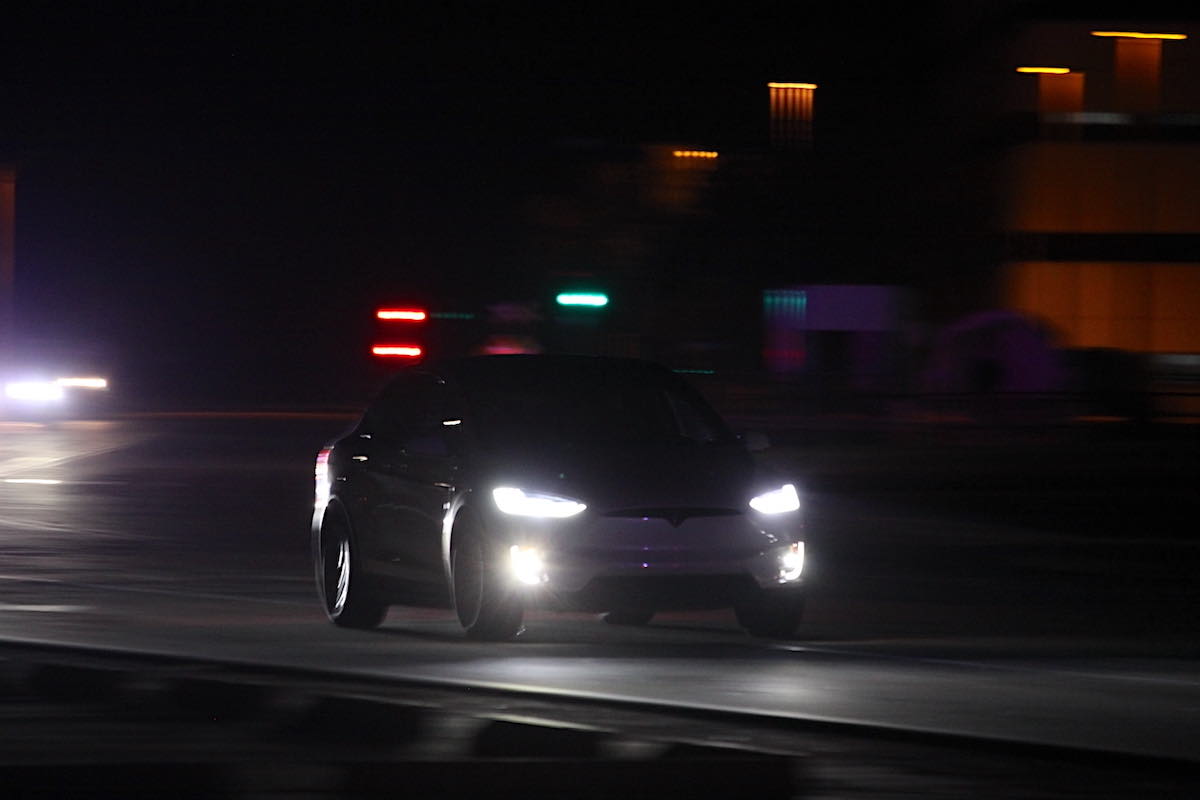
“A wet and unstable pattern will continue over Central Florida as a frontal boundary remains stalled across the area,” the weather team wrote in the forecast Monday morning. “Rain showers and isolated thunderstorms are likely as low pressure waves move along the boundary over the next two days.
“On Wednesday, high pressure begins to build in and push the unsettled weather south through the day. By Thursday morning, the high pressure will be centered near Arkansas, creating gusty northerly winds along the Space Coast due to the pressure gradient between the high and the departing boundary,” the foresters wrote.
“The primary weather concern Thursday morning will be these gusty liftoff winds associated with this strong pressure gradient.”
At launch time Thursday, forecasters expect north-northeast winds of 17 to 22 mph, a temperature of about 68 degrees Fahrenheit, and a few low-level clouds.
There is also an 80% chance of good weather for a backup launch opportunity at 5:49 a.m. EDT (0949 GMT) Friday.
Email the author.
Follow Stephen Clark on Twitter: @StephenClark1.

